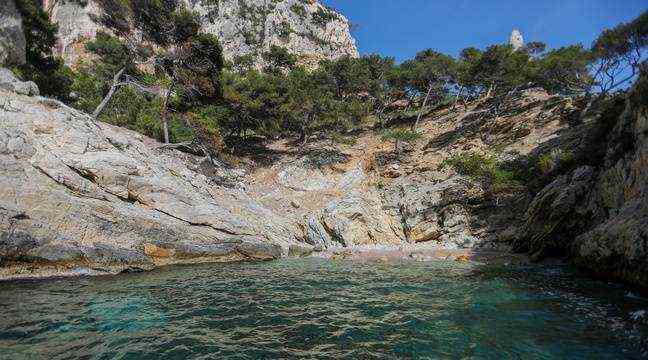His phone keeps ringing. Divers, fishermen, sometimes even swimmers: all tell him to have seen the brown algae native to Japan, called “rugulopteryx”. “This year, it has become invasive,” sighs Thierry Thibault, marine biologist and algae specialist at the Mediterranean Institute of Oceanology in Marseille. He was the first to have discovered it in the region in 2018. First around Île Maïre, near Les Goudes, and now everywhere in an unfortunately well-oiled proliferation scenario.
“Today, it is found continuously from Cape Croisette to Marseilleveyre, but also in Morgiou, on the Jarre, Jarron and Plane islands, and even in the city center, in the valley of Auffes”, lists Thierry Thibault, who was also able to observe the presence of algae on the Blue Coast, in Carro and Sausset in particular. In Marseille, fishermen now avoid these sectors, so as not to collect algae in their nets. “It is a species” transformers “this alga, it covers rocky bottoms and transforms the habitat, continues the researcher. We have just started studies on its impact on flora and fauna, we should have results within a year. “
“Without humans, this invasive species could not have come,” recalls Thierry Thibault. This is not the first time that this brown alga has been spotted in the Mediterranean. She was first seen in the Strait of Gibraltar, in the south of Spain, in 2015. And from the beginning of the 2000s, closer to us, in the Thau lagoon, in Sète. “You dive into the pond, you are in the Sea of Japan! », Ironically the marine biologist to recall the specificity of this pond which, according to him,« is the zone in the world where there is the most introduced algae ». For many years, certain practices were not supervised. Spats (baby oysters) bought in Japan could explain the presence of brown algae.
“A meal thrown into the sea and here we go”
But how did this algae get from the Thau lagoon off the coast of Marseille? “We have a good hypothesis which is that of a leftover meal, sea urchins or shells from the pond, which were thrown into the sea towards Maïre Island, and here we go,” rewinds Thierry Thibault. “We must educate the public not to throw anything and everything into the sea,” he insists, recalling in passing that “biological invasion is the second cause of the decline in biodiversity after the destruction of the sea. ‘habitat. “
The Calanques National Park has also taken up the problem and is carrying out, in collaboration with the researcher, a study to map the presence of algae on its territory. Because now that it has reached the seabed of the region, it is difficult to fight against its very rapid proliferation dynamic, in a depth of up to 25 meters. There she is, and for a while.
Still, it is an algae that rather likes the cold. Thierry Thibault does not see it, to this day, going for example towards the Var or Corsica. And the images of beaches covered with brown algae are not the order of the day. “We do not find strandings like in Spain, here the sea has no tide”, explains the researcher. The phenomenon is not to be compared with green algae in Brittany, which originates from industrial pollution.
Bad smells at the port of Callelongue
In Marseille, the port of Callelongue, however, is a shadow. Because of its deep and shallow character, algae collects and rot, causing nauseating odors that contrast with the postcard image of the place. “A week ago, we entered the city of Marseille, which has jurisdiction over health issues,” indicates the Calanques National Park, still awaiting a return.
While the algae in itself is not dangerous to human health, the clumps can, on rotting, produce hydrogen sulphide (H2S). “In addition to cleaning, the solution of sucking algae from the bottom of the port could be interesting,” notes the park. Except that the port is the responsibility of the metropolis. The park says it is ready to work with her on the subject.

